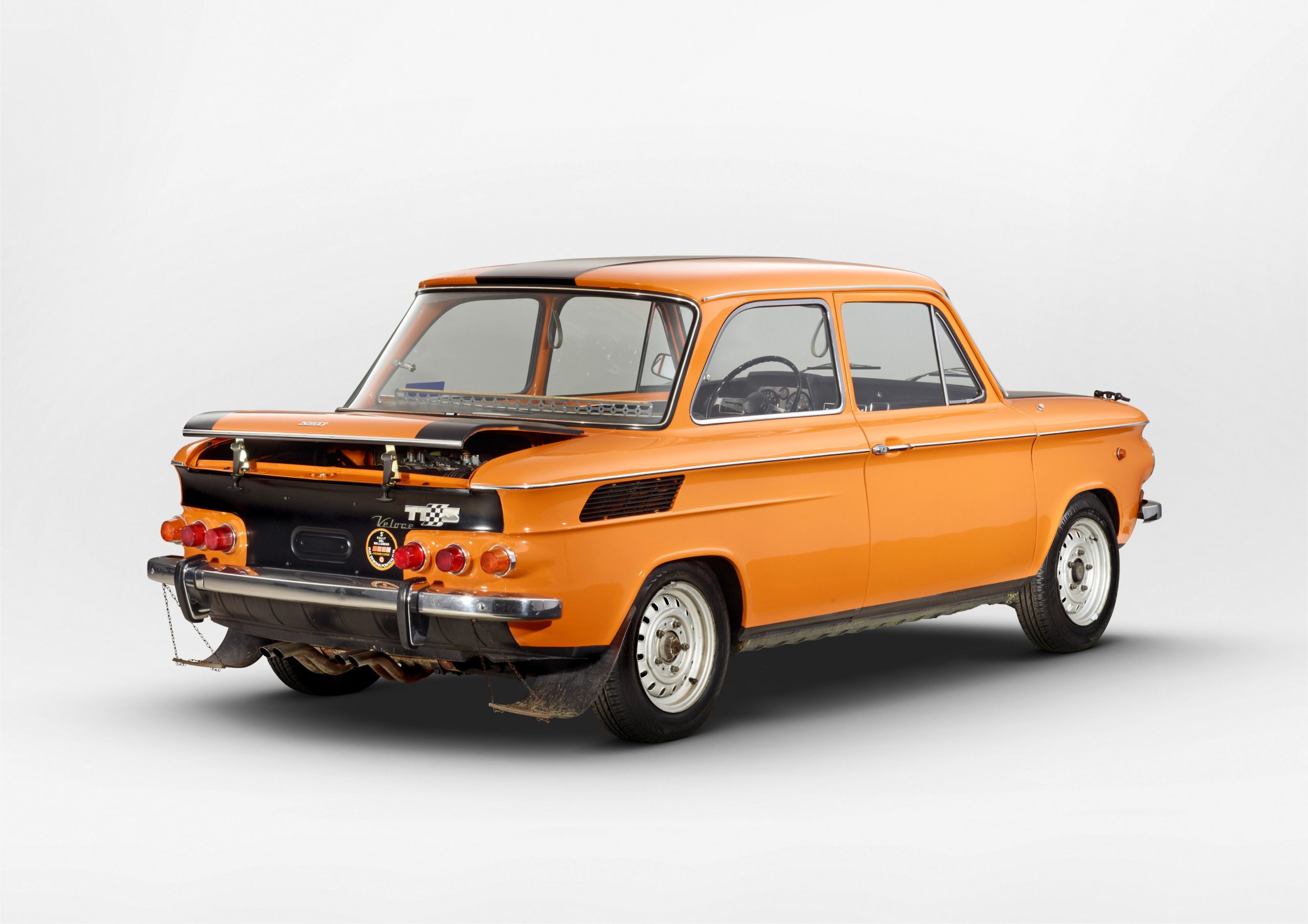The NSU Prinz and TTS are legendary today. In their day, the rear-engined cars were well-behaved everyday companions as well as sharp racing machines. The NSU Prinz 1000 TT, the NSU TT and the NSU TTS were passenger car models of NSU Motorenwerke AG and were built in various versions from 1965 to 1972. They were based on the mass-produced NSU Prinz 1000 model.
The NSU Prinz and TTS are legendary today. In their day, the rear-engined cars were well-behaved everyday companions as well as sharp racing machines. The NSU Prinz 1000 TT, the NSU TT and the NSU TTS were passenger car models of NSU Motorenwerke AG and were built in various versions from 1965 to 1972. They were based on the mass-produced NSU Prinz 1000 model.
In 1965, the Prinz 1000 was joined by the Prinz 1000 TT. In addition to larger 13″ wheels, it featured the 1085 cc NSU Type 110 engine, with an increase in compression ratio to 9:1 bringing output to 55 hp (40 kW) and a top speed of 148 km/h. Combined with an unladen mass of only 640 kg, this resulted in sporty driving performance.
An original NSU Prinz 1000 TT can be recognized by the double headlights in front, the black stripe in between with the inscription “NSU Prinz 1000”, the rear flared windows and the chrome letters “TT” attached to the rear. In addition, two holes for the oil cooler are drilled in the rear of the engine compartment at the intake shaft. Due to the only moderate ventilation of the engine compartment, the engine tends to overheat, which is why the hood is also set up while driving. Ruptured oil lines frequently caused fires. In addition, the car was sensitive to side winds. In two years, 14,292 NSU Prinz 1000 TTs with 1.1-liter engines were built.
The TTS was introduced in February 1967 especially for racing and rallying. (In the first months, the vehicles were still called “Prinz 1000 TTS”). These vehicles were designed as sports sedans with a low power-to-weight ratio, anticipating the later concept of the VW Golf GTI. Thus, the TTS produced 70 hp (51 kW) at 6150 rpm from a displacement of 996 cm³ with two Solex double flat-flow carburetors and a compression ratio of 10.5:1 as standard, tuned also over 85 hp (62 kW). At the time, this corresponded to the engine output of cars in the upper mid- and luxury classes, but the TTS weighed only 700 kg. The wheels were set to negative camber at the front and rear.
Because of their maneuverability, the TTS continued to be successful in hill climbs and slalom competitions long after production ceased.
The TTS was recognizable by its lettering in the chrome stripes with black inlay between the main headlights and the chrome letters at the rear. At the front of the car was an additional oil cooler. There were three holes for the oil cooler on the intake duct in the engine compartment.
Until July 1971, a total of 2402 cars of this type were produced in “production campaigns” carried out approximately every three months.



